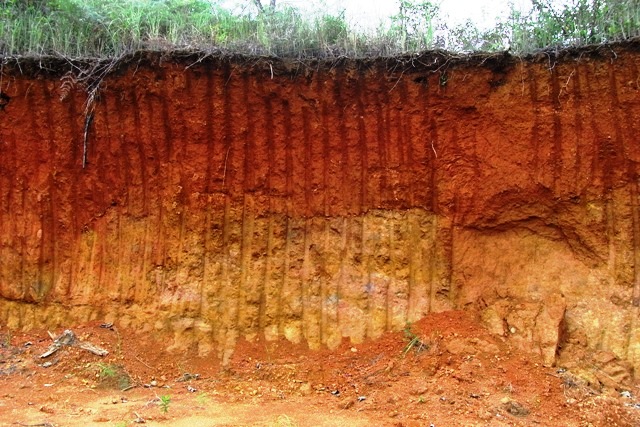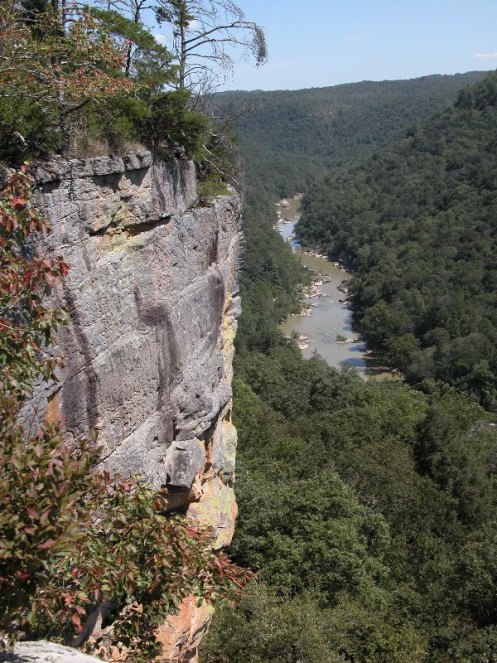The development and change over time (evolution) of geomorphic, soil, hydrological, and ecosystems (Earth surface systems; ESS) is often, perhaps mostly, characterized by multiple potential developmental trajectories. That is, rather than an inevitable monotonic progression toward a single stable state or climax or mature form, often there exist multiple stable states or potentially unstable outcomes, and multiple possible developmental pathways. Until late in the 20th century, basic tenets of geosciences, ecology, and pedology emphasized single-path, single-outcome conceptual models such as classical vegetation succession; development of mature, climax, or zonal soils; or attainment of steady-state or some other form of stable equilibrium. As evidence accumulated of ESS evolution with, e.g., nonequilibrium dynamics, alternative stable states, divergent evolution, and path dependency, the "headline" was the existence of > 2 potential pathways, contesting and contrasting with the single-path frameworks. Now it is appropriate to address the question of why the number of actually observed pathways is relatively small.The purpose of this post is to explore why some developmental sequences are rare vs. common; why some are non-recurring (path extinction), and some are reinforced.

Path Extinction
When considering all possible pathways that do not violate governing laws and principles, some are inherently unlikely. For instance, pathways involving infrequent, low-probability events (e.g., bolide impacts, mega-floods, volcanic super-eruptions, EF5 tornadoes) will be far less common than pathways that do not require these events. Independently of these variations in probability, this section considers why some evolutionary pathways that do occur may be non-recurring, or at least inhibited in reoccurrence. It is axiomatic that path extinction is partly dependent on time scales. Pathways driven by or associated with glacial-interglacial cycles, for instance, cannot recur over shorter time periods.
Literal Extinction
Environmental change may eliminate some necessary controls or resources of a pathway, such that it cannot reoccur. For instance, there exist types of paleosols that do not have even an approximate modern analog, because their pedogenesis was influenced by, e.g., an atmospheric composition that no longer exists, and/or by extinct biota with no modern analogs. Over shorter time scales, landscape evolution, pedogenesis, or succession patterns linked to, e.g. a glacial climate cannot recur in currently unglaciated zones until a new glaciation occurs.
Unfavorable Outcomes
Some ESS evolutionary paths may lead to outcomes or states that are suboptimal, inefficient, or dangerous for biota involved, or that are dynamically unstable, vulnerable or fragile. With respect to, e.g., animal ecology, these bad outcomes condition against future choices and behaviors that involve those paths. This may occur due to conditioning, or learning/teaching to avoid these behaviors, or because death or lack of reproductive success culls any genetic tendency toward these behaviors.

Frost flowers occur when ice is extruded from long-stemmed plants under freezing conditions when the ground is not already frozen. They are fragile and unstable. (Photo credit: greatwhitenorth.blogspot.com)
With respect to (partially or wholly) abiotic features such as landforms, soils, or hydrologic systems, if the end-state of a pathway results in instability or fragility, the state simply does not last long. Therefore, given our dependence in many cases on reconstructing pathways from historical evidence, they are less likely to be observed or preserved (e.g., in stratigraphy). This vulnerability and instability may thus result in a kind of apparent extinction, where things that do happen are simply rarely, if ever, observed.
Hillslopes that develop to slopes steeper than the angle of repose eventually fail, as did this one in north Queensland, Australia. Thus the unstable steeper outcomes do not last and are not preserved.
Negative Feedbacks
The biotic phenomena mentioned above constitute negative feedbacks against certain pathways, reducing their future occurrence. These phenomena may also apply to partially abiotic ESS features, too, due to the effects of ecosystem engineering and niche construction. For example, chemical weathering feedbacks may limit runaway global cooling or warmer to global icehouse or greenhouse conditions. Landforms and soils may absorb many environmental effects of biota, thereby buffering the atmosphere, hydrosphere, and lithosphere from some biotically-induced changes. These phenomena essentially prune potential evolutionary pathways.
More generally, many evolutionary pathways in ESS are inherently externally or self-limited. Phillips (2014) gives examples for geomorphic systems involving threshold-mediated modulation, whereby exceedence of thresholds (for instance, positive or negative mass balances) may limit development on a particular trajectory.
Irreversible and Self-Limiting Phenomena
Weathering processes are often irreversible, and chemical weathering may depend on the availability of weatherable minerals. These are examples of situations where, at least over many time scales, some paths may be unrepeatable due to material limitations. A trajectory involving the weathering of a granitic rock mass, for instance, cannot be repeated (in that location). For another example, once the carbonate rock in a terrane has been consumed, pathways involving karstification are no longer possible.

Weathering of the basalt leading to development of this Phillipines weathering profile is irreversible (photo credit: V.B. Asio).
Path Instability
In this case instability refers to developmental sequences themselves, rather than states at the end of (or along) the sequence. Path instability means that once a developmental path is perturbed, it does not return to its pre-disturbance trajectory, but takes a new pathway. This concept is discussed here in the context of chronosequences, and examples given of soil chronosequences.
Path Reinforcement
Here we consider why and how some pathways, however probable their initial occurrence, may be enhanced or encouraged with respect to recurrences. Pathways dependent on frequent, common events are more likely to recur, other things being equal. Thus, for instance, post-fire vegetation succession patterns may be common in environments characterized by frequent fire, and post-flood recovery pathways may be recurrent in rivers that flood frequently.
Selection
The most fundamental phenomenon in path reinforcement is selection. While Darwinian natural selection strictly applies to individual organisms, selection in a broader sense applies to ESS in general, with a probabilistic tendency for development and preservation of more stable, efficient, and resistant structures and pathways. I have expounded on this in several previous posts: 1, 2, 3. Thus we can expect that evolutionary trajectories leading to these outcomes are more likely than others.
Channels are the most efficient way to move water. Thus the evolution of hydrologic systems repeatedly leads to the development of channels (Sabine River, TX/LA).
Resistance and Resilience
Pathways leading to outcomes that are resistant to change or disturbance, or resilient (able to recover) will be more often observed and preserved. Thus, independently of selection for resistance and dynamical stability, this can lead to apparent reinforcement due to more common recording.

Sandstone often occurs with less resistant rock in sedimentary sequence. Due to resistance selection during erosional dissection, sandstone ridgetops are a recurring feature in areas of eroded sedimentary rock (Big South Fork National Recreation Area, Kentucky).
Path Stability
Again, this refers to stability of developmental sequences themselves, rather than system states. Some pathways are dynamically stable, and resume following perturbations. Some generic examples are given in this paper. In general, divergent radiation-type sequences are highly robust to disturbances. However, due to the nature of such pathways, while the general structure is path-stable, the specific divergent outcomes may be quite variable. Linear sequential and some convergent patterns are also somewhat robust to disturbance. Thus, where classic linear successional sequences apply, some path stability occurs.
Final comments
Early in my 35-year scientific career I began puzzling over the deviations from predicted pathways and outcomes based on classic models of e.g., steady-state equilibrium, convergence to climaxes, repeated cycles, etc. Now, having been awakened to the vast number of possibilities of Earth surface system evolution, my puzzling is reversed—how are the apparently limitless possibilities distilled into a still large, but much smaller than limitless, range of historical trajectories? This post reflects a first effort to think through how some of those possible pathways are pruned, while others are encouraged.
Posted 6 December, 2017
